-
Butchering
10/30/2015 at 15:51 • 0 commentsFirst I need to disassemble the whole keyboard, then I will pick the parts I want to keep and modify it, and then put it back together again. Sounds simple. Let's start with the switches. They are actually just inserted in the holes in that metal plate, and then soldered to the printed circuit board on the other side.
I briefly considered reusing the printed circuit board too, but it's a single-layer board with insanely complex paths, and I really don't feel like reverse engineering this. I will just connect everything with wires instead.
So, the keycaps are removed and washed:
![]()
And then put out to dry:
![]() The switches need to be unsoldered and removed one by one:
The switches need to be unsoldered and removed one by one:
Then the PCB can be removed. I will probably also use all the diodes that are on it:![]()
Next, I need to cut the metal plate. First, just cut off the numpad part:![]()
![]()
Trying out the desired layout:
Then, a bit of a complication. You see, modern keyboards have more keys than the old ones had. In particular, they have the "Super" keys between the "Ctrl" and "Alt". I want to have those too. Fortunately I have some spare switches and keycaps from the numpad, so I will just have to make additional holes for them.![]()
First, drill around the edge:
And then file the remains:![]()
It's not super-pretty, mostly because that metal plate turns out to be surprisingly hard. Steel? Perhaps.![]()
Finally, the finished layout:
Next, electronics and chassis.![]()
-
The Itch
10/30/2015 at 15:37 • 0 commentsAfter seeing a talk about keyboards on a conference, I decided to try a different keyboard. While the keyboard itself was pretty bad -- one of those mechanical ones, loud, with huge travel and keys getting stuck if you don't hit them ideally vertically -- there was one thing I actually liked about it, and that's the fact that it didn't have a numeric keyboard. That lets you keep your mouse much closer and makes your hand less strained. I decided I need a tenkeyless keyboard. On to the Internet to look for one!
Several hours later I realized that nobody normal makes tenkeyless keyboards. They are the domain of the crazy mechanical keyboard crowd, possibly because that lets them save $100 on additional switches. It's absolutely impossible to find a good, wired, scissor-key, tenkeyless keyboard, no matter the price range. Sigh. That means I have to make my own.
Unfortunately, scissor keys are hard to get (and even harder to make, I suppose). So I will need some kind of the "mechanical" switches (they are actually electrical switches, "mechanical" just sounds cooler) that don't have such a large travel and don't get stuck. Maybe like the ones I had in some of my older computers? Hmm, do I have some old computer keyboards?
Turns out that I had one, that I saved from trash precisely for the switches. I wanted to make a stenotypist keyboard with them (and use Plover), but now that will have to wait. They keyboard is quite nice and heavy, but a little bulky.
![]()
Some searching revealed it's Chicony KB-5161 with Alps SKCM Blue switches. Whatever. Let's look inside.
![]()
What do you know, pretty nicely done keyboard. No idea what the switch is for, but we are not going to use that part anyways. I think I will use the switches, the keycaps and the nice, heavy metal plate they are all attached to. After removing the keycaps we can see the switches:![]()
![]() It should be relatively easy to cut off the numeric keyboard part of the plate, and then make a new chassis for the whole thing.
It should be relatively easy to cut off the numeric keyboard part of the plate, and then make a new chassis for the whole thing.
 deʃhipu
deʃhipu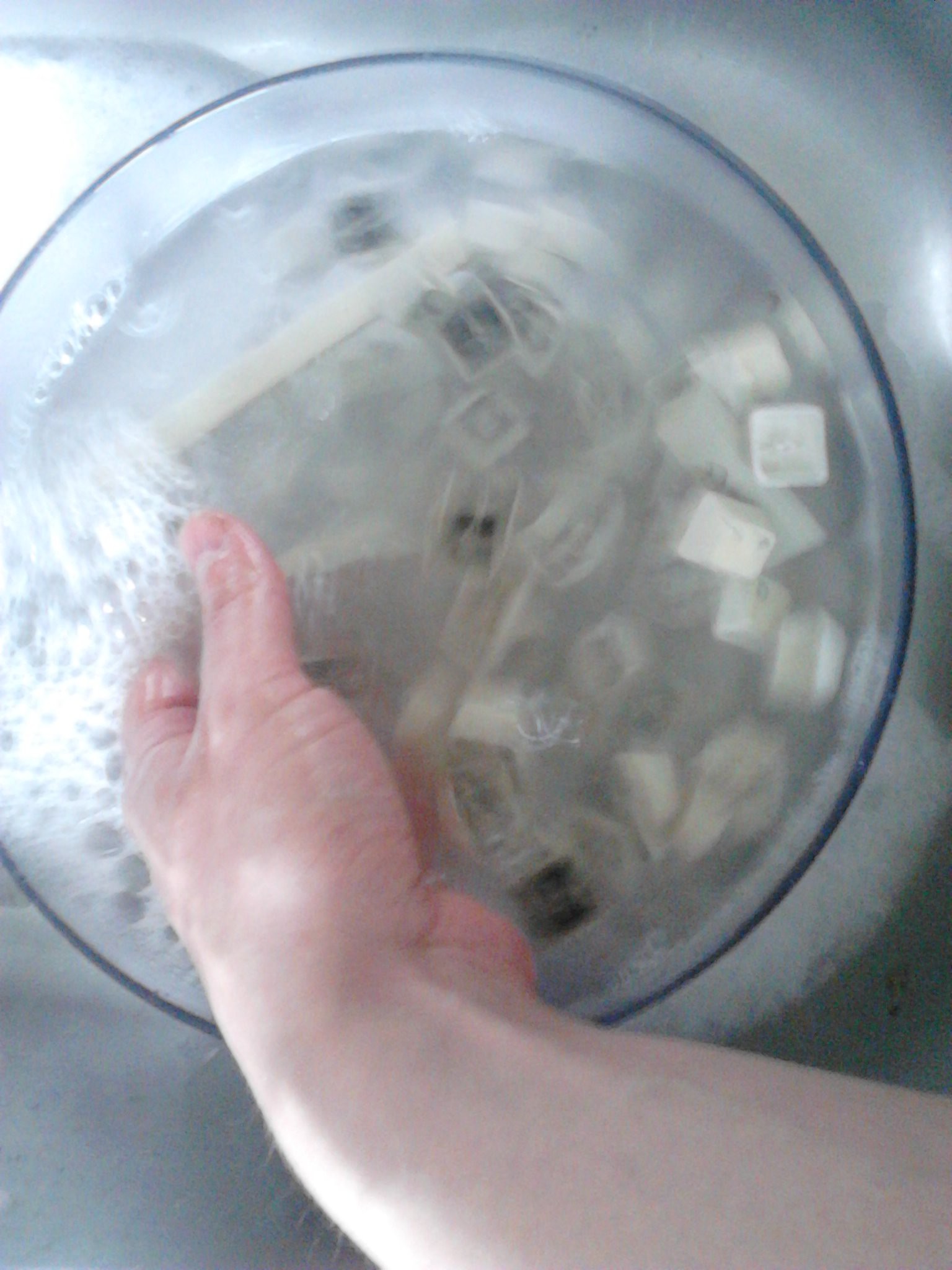
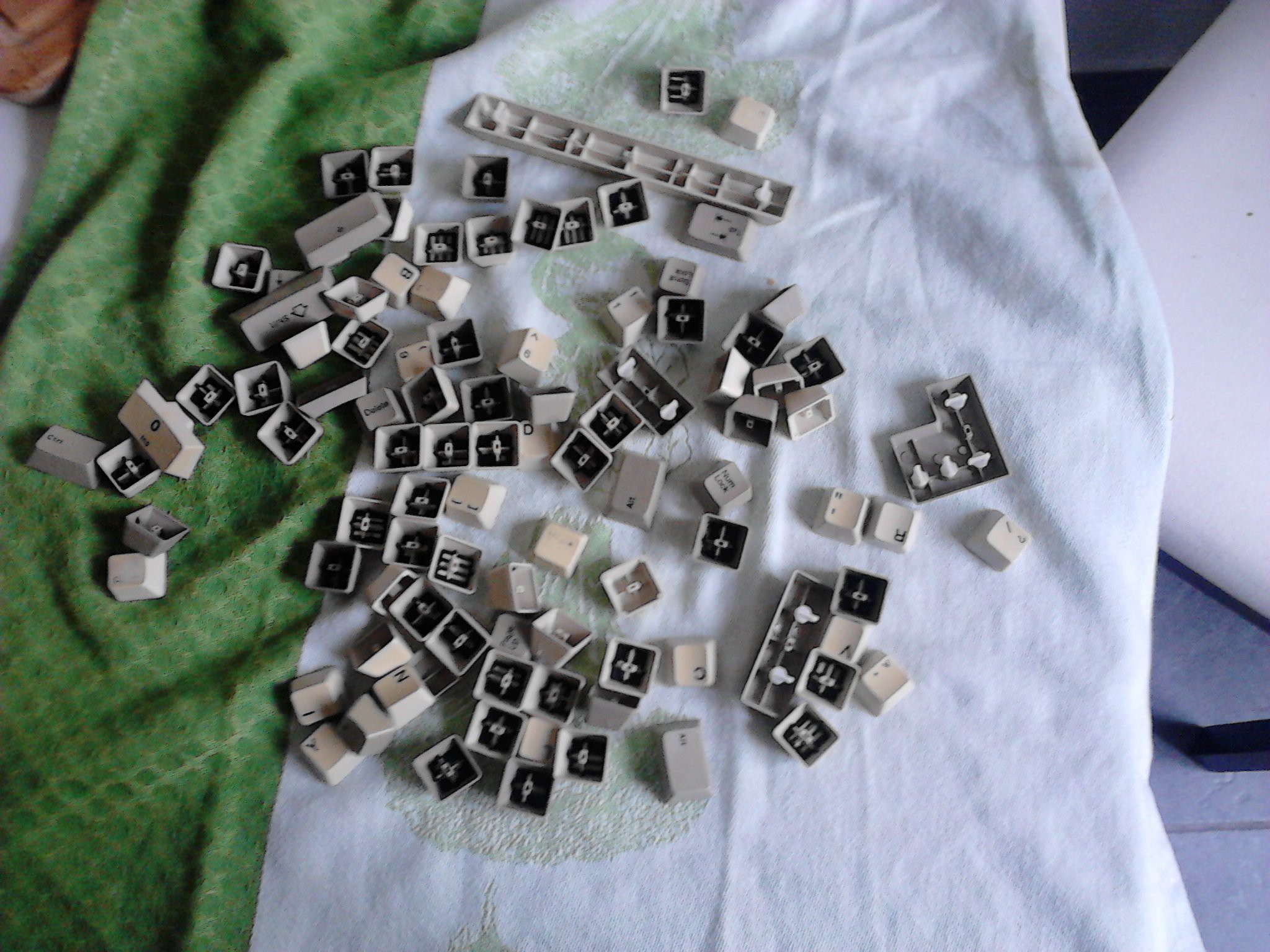 The switches need to be unsoldered and removed one by one:
The switches need to be unsoldered and removed one by one: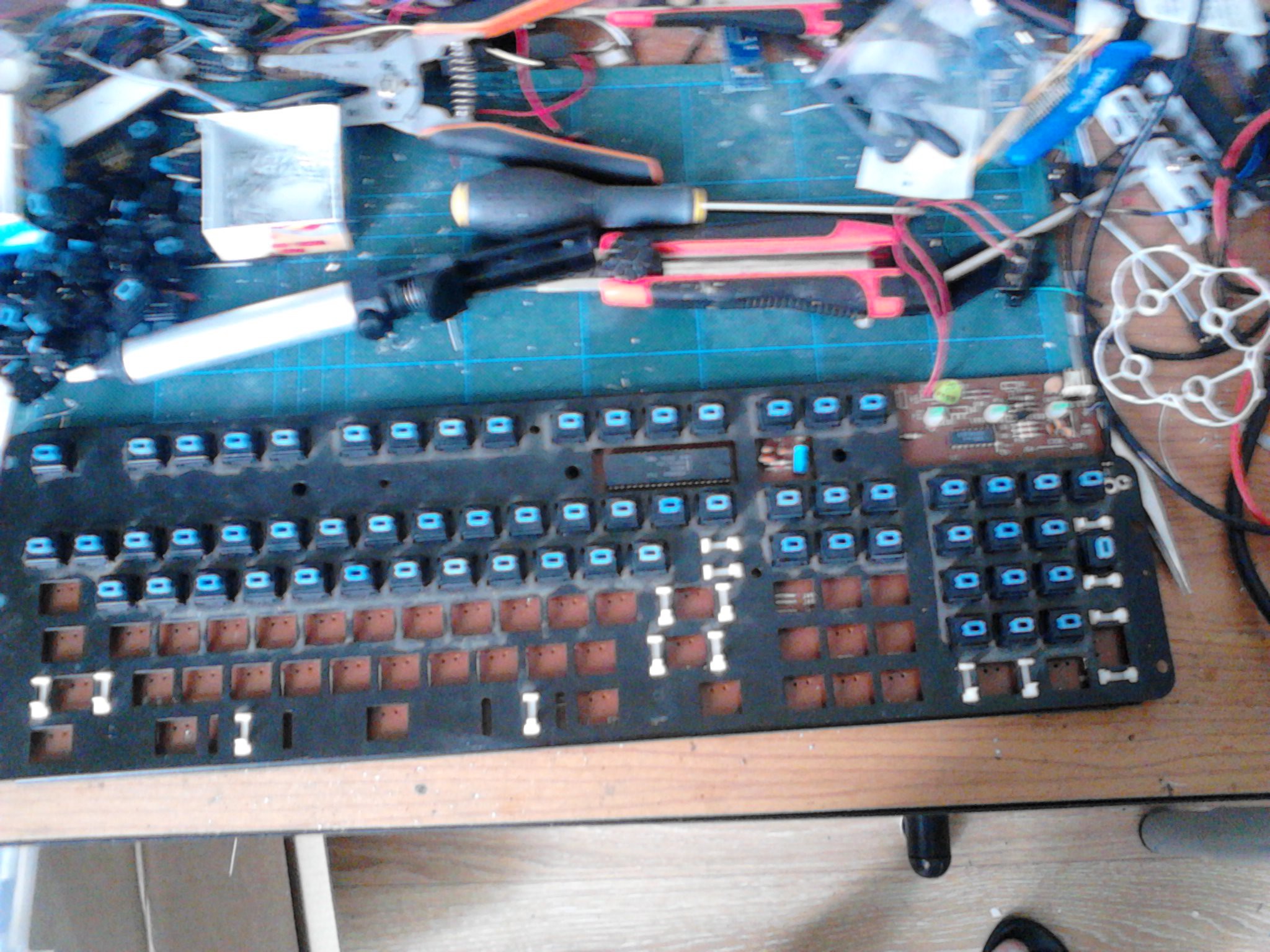
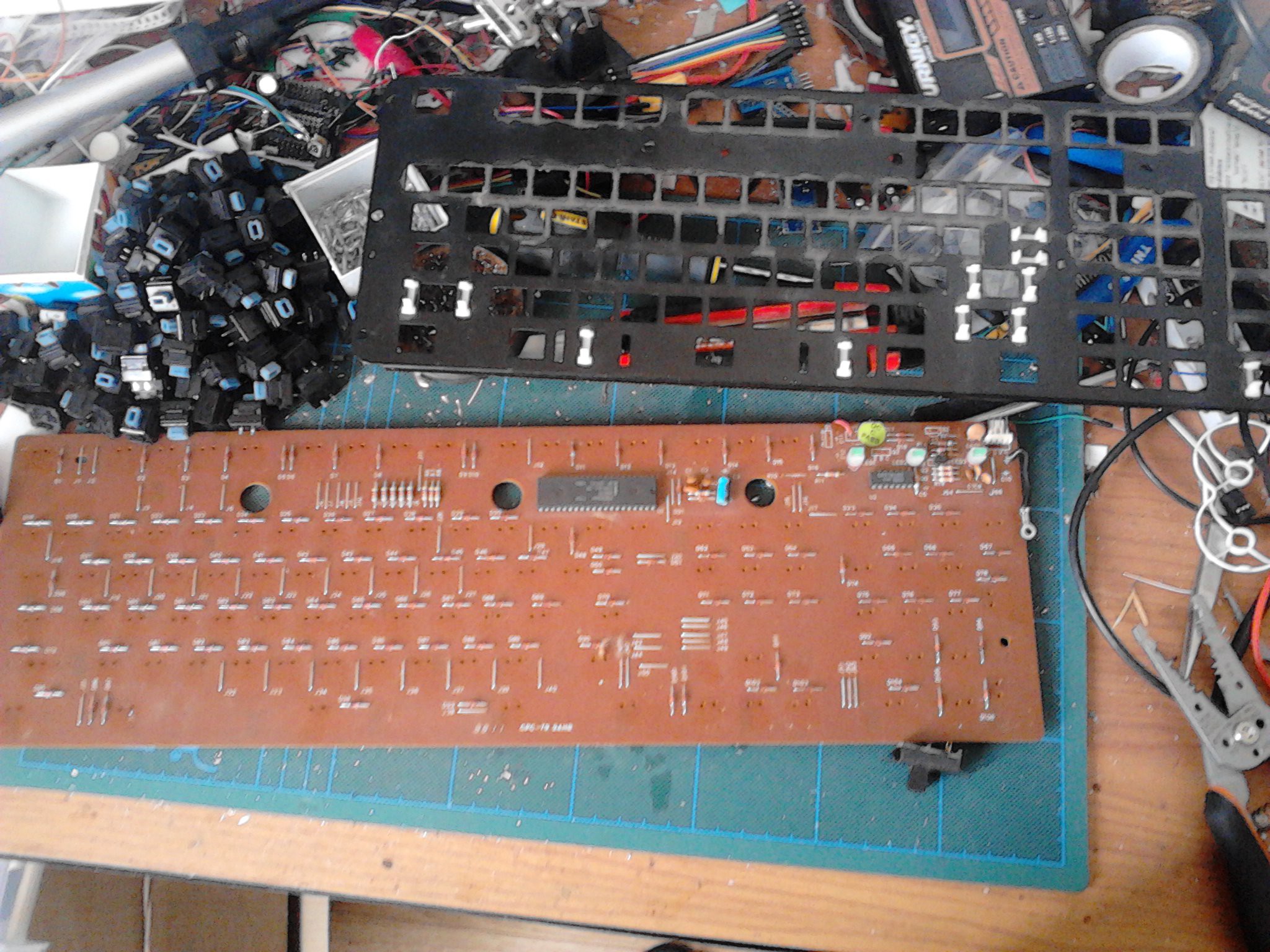

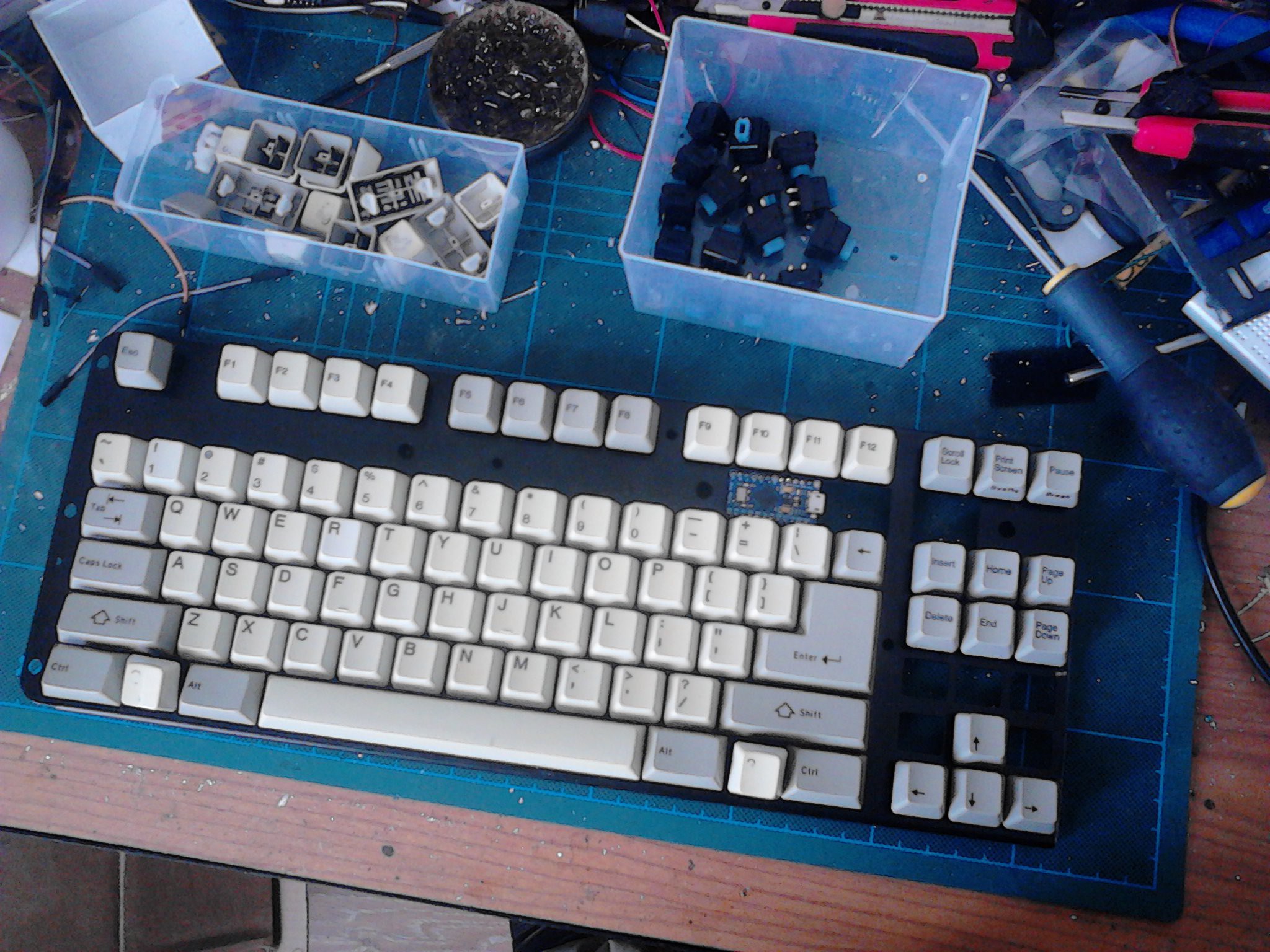
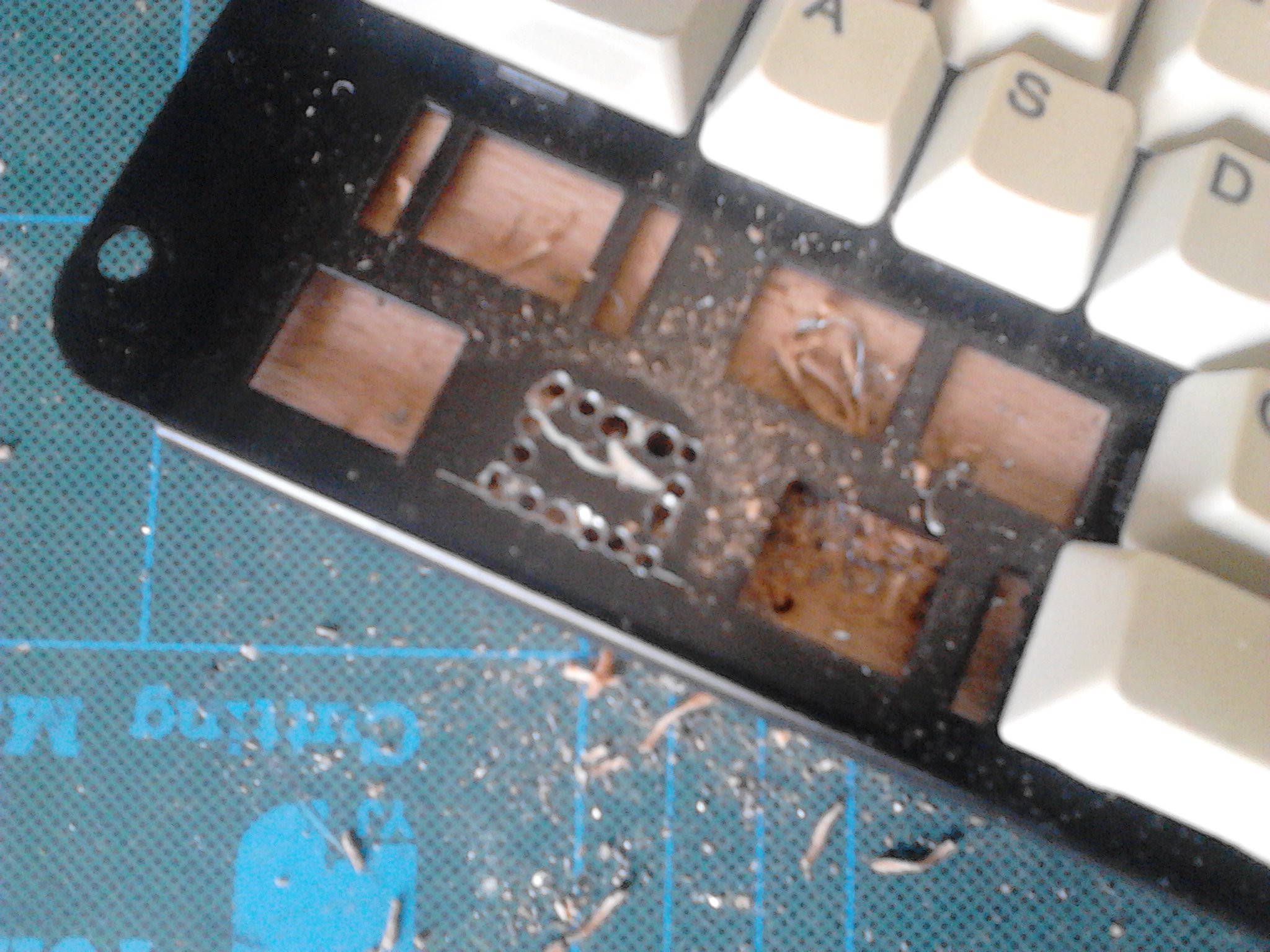
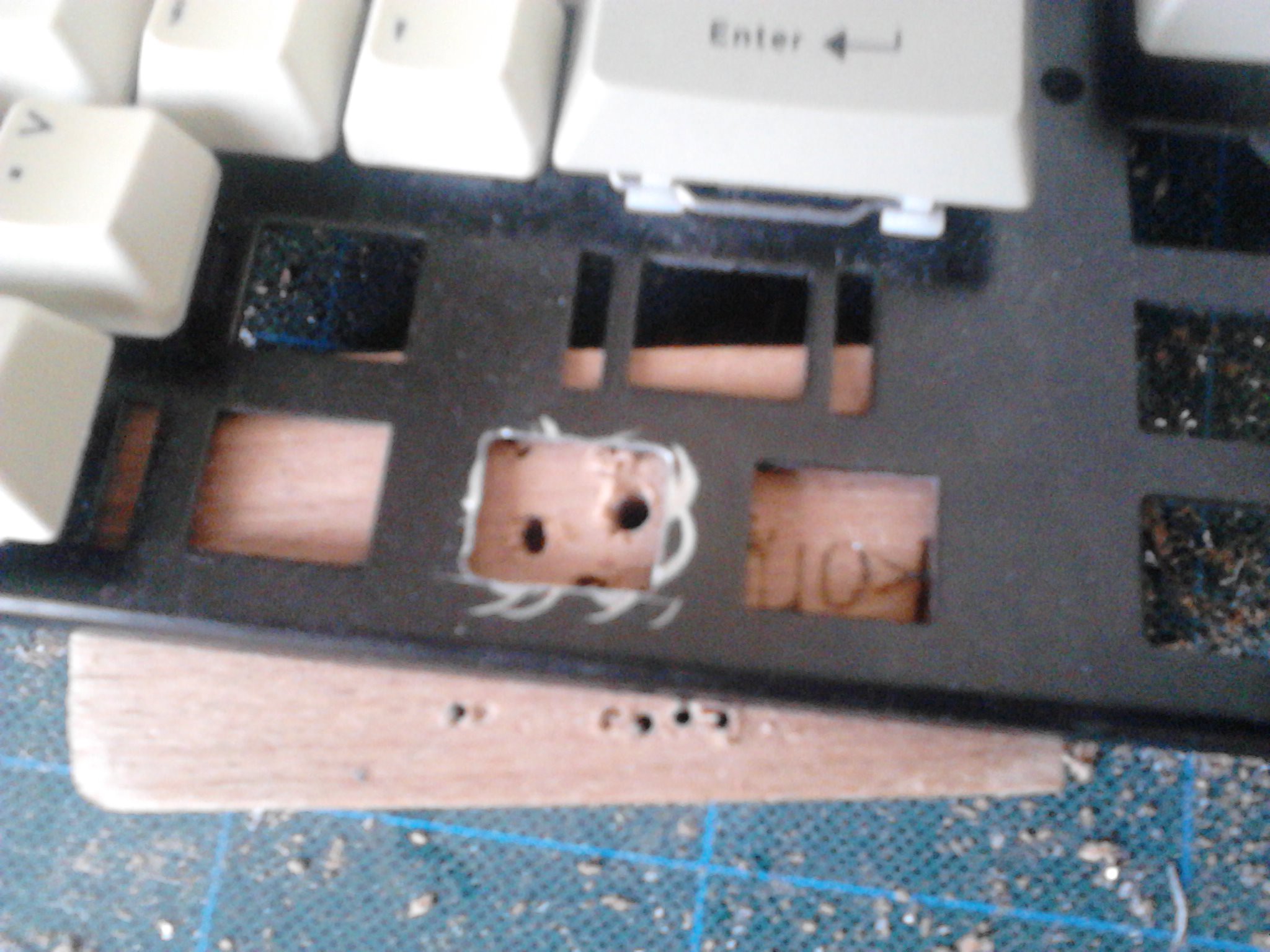
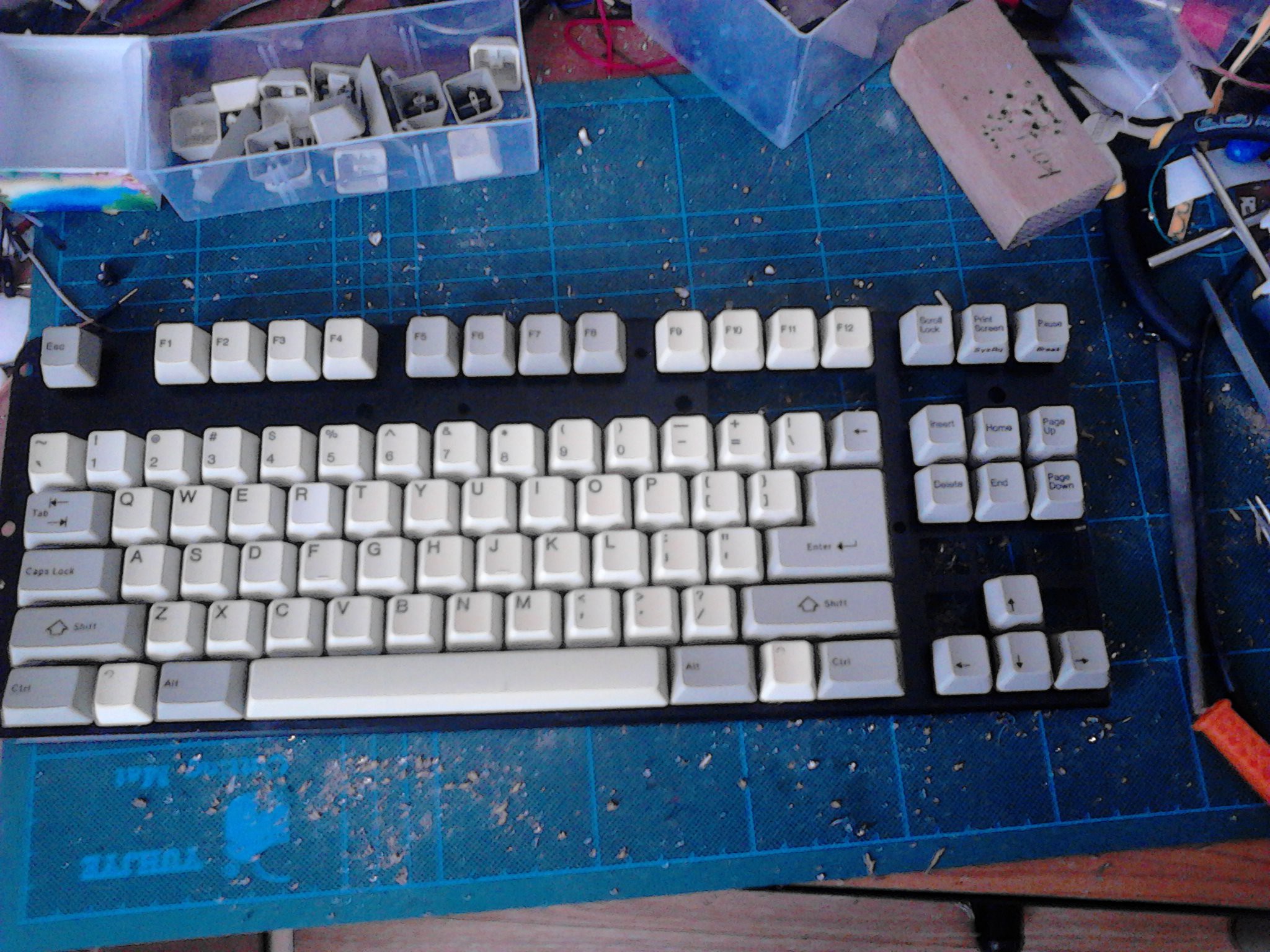
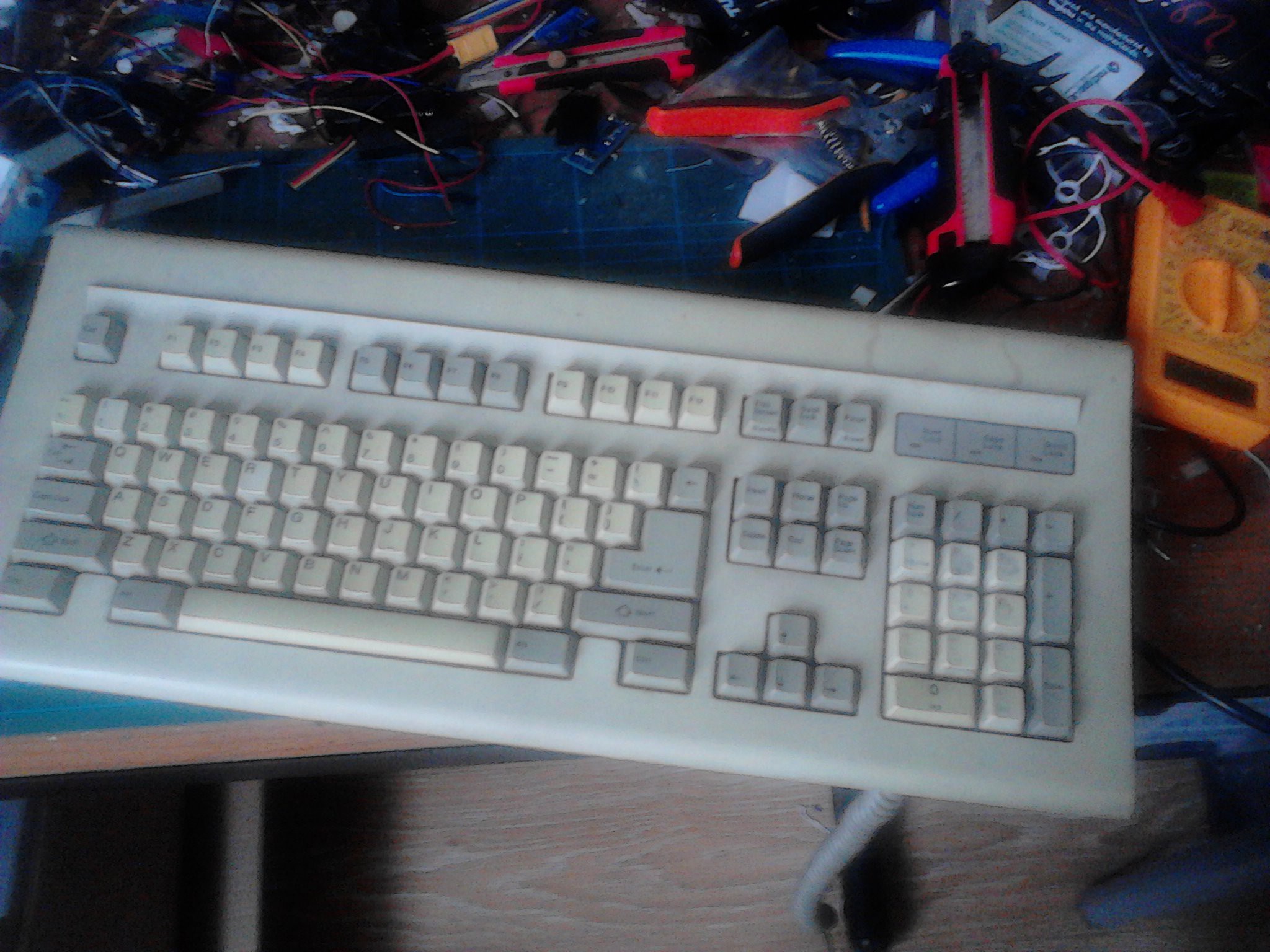
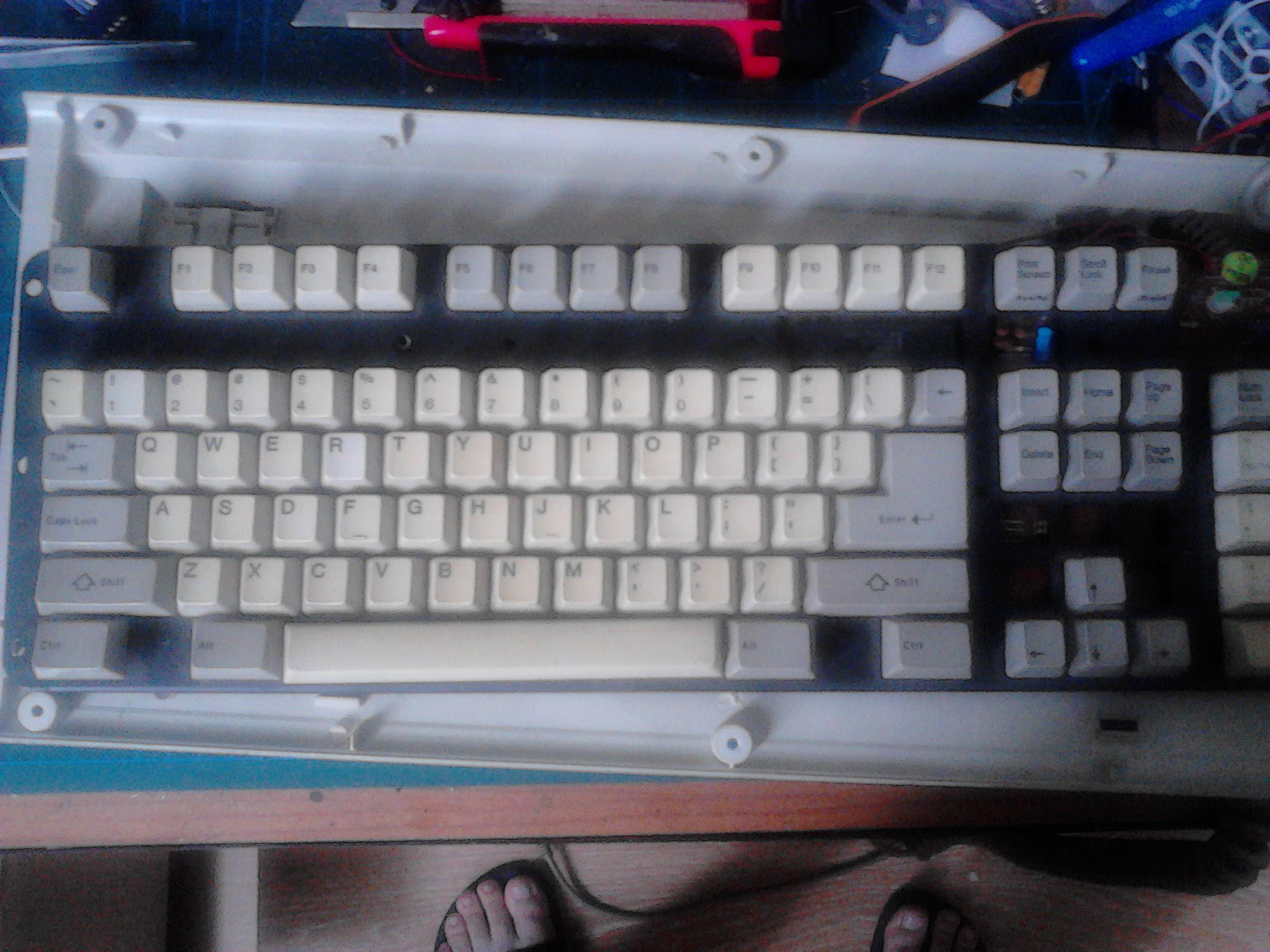
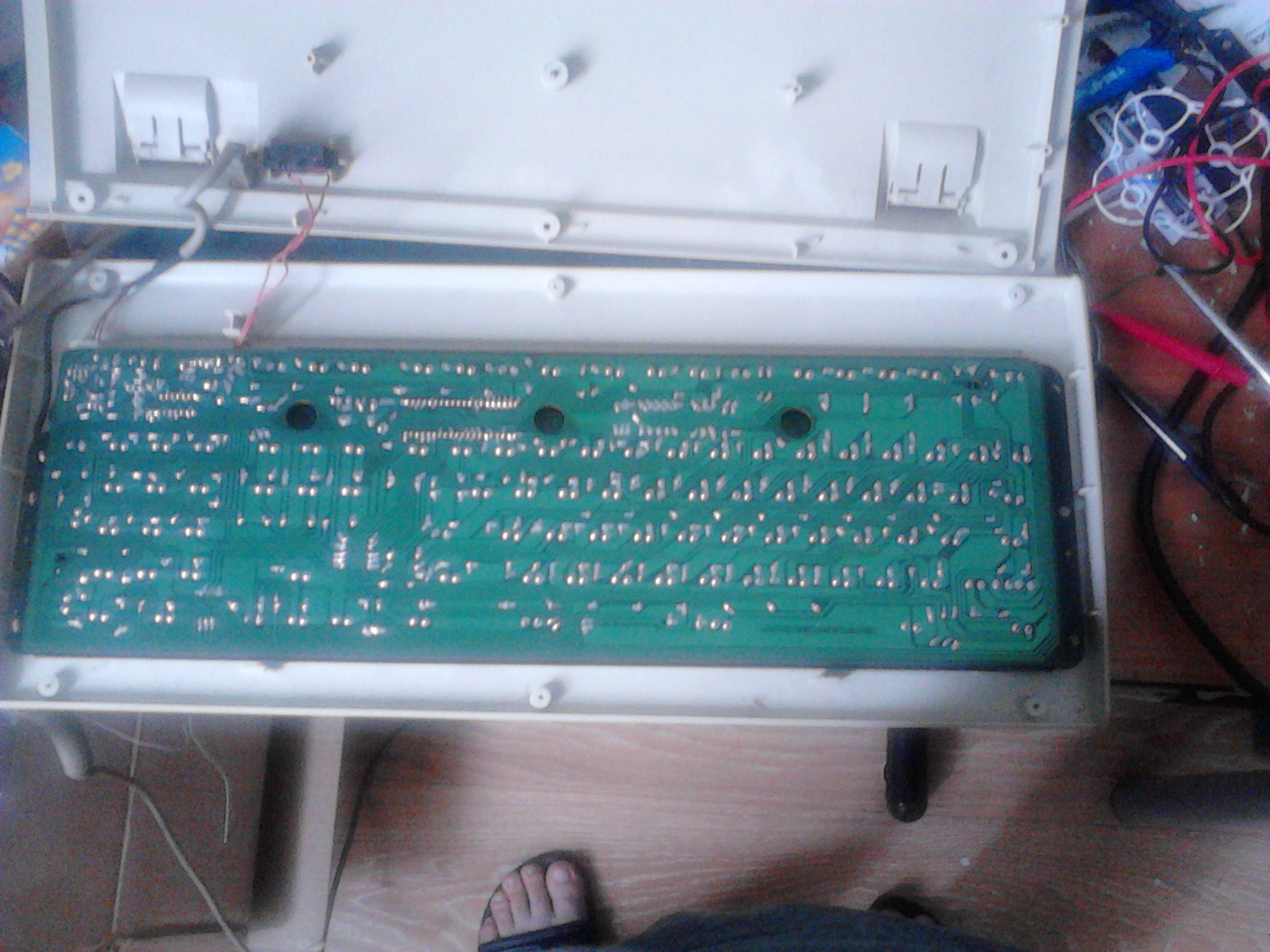
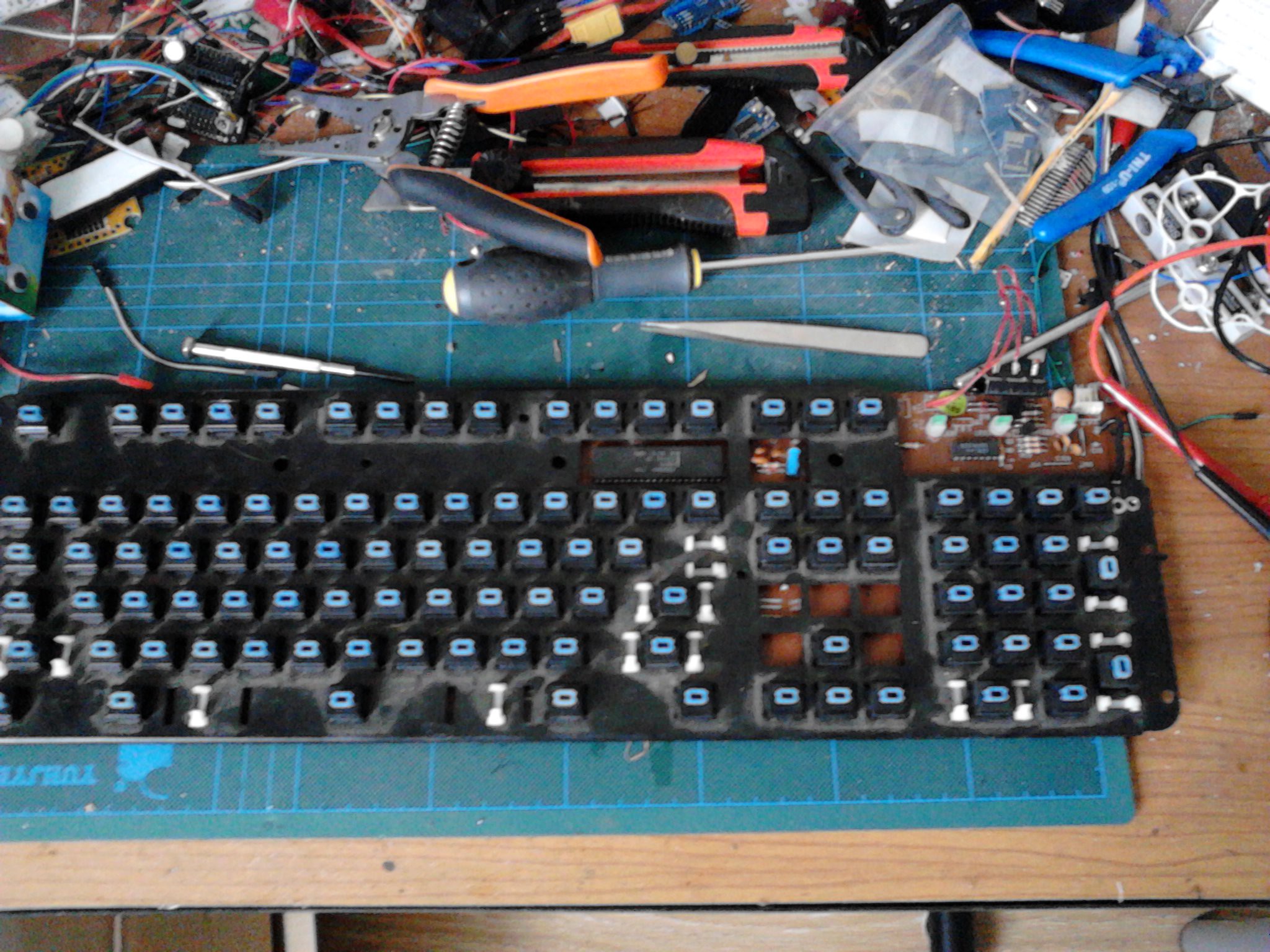 It should be relatively easy to cut off the numeric keyboard part of the plate, and then make a new chassis for the whole thing.
It should be relatively easy to cut off the numeric keyboard part of the plate, and then make a new chassis for the whole thing.